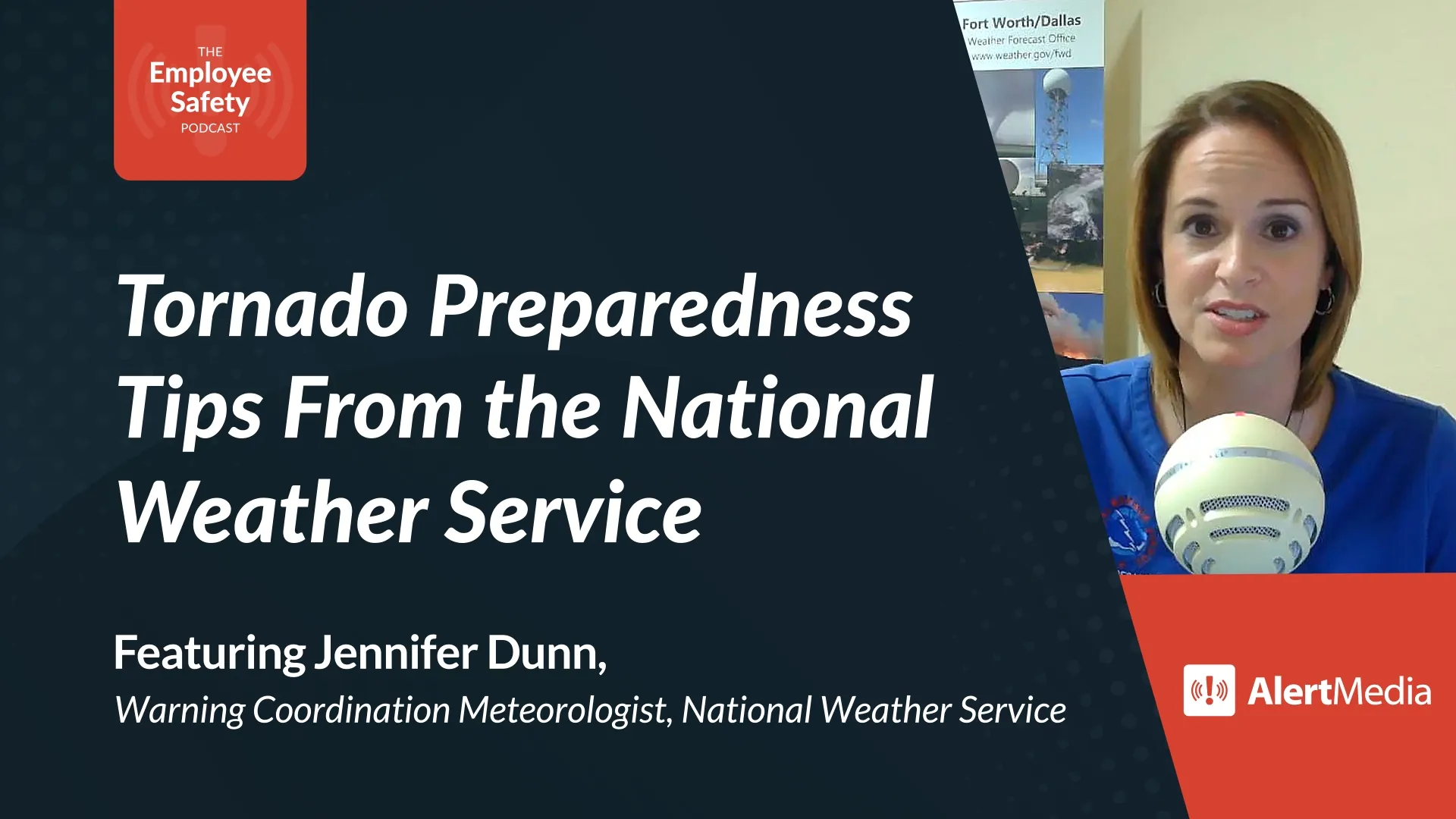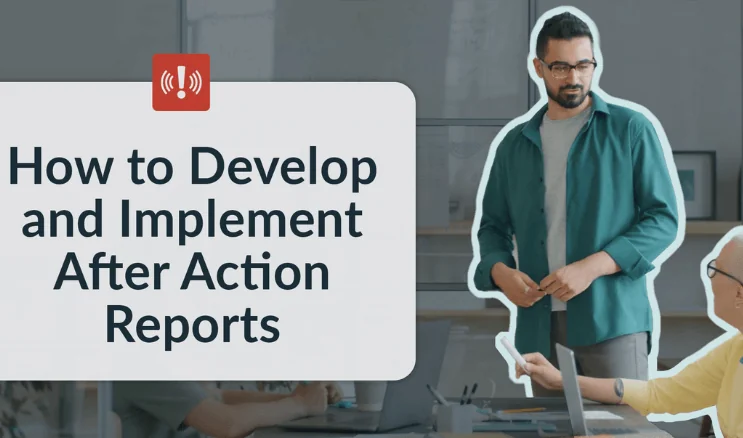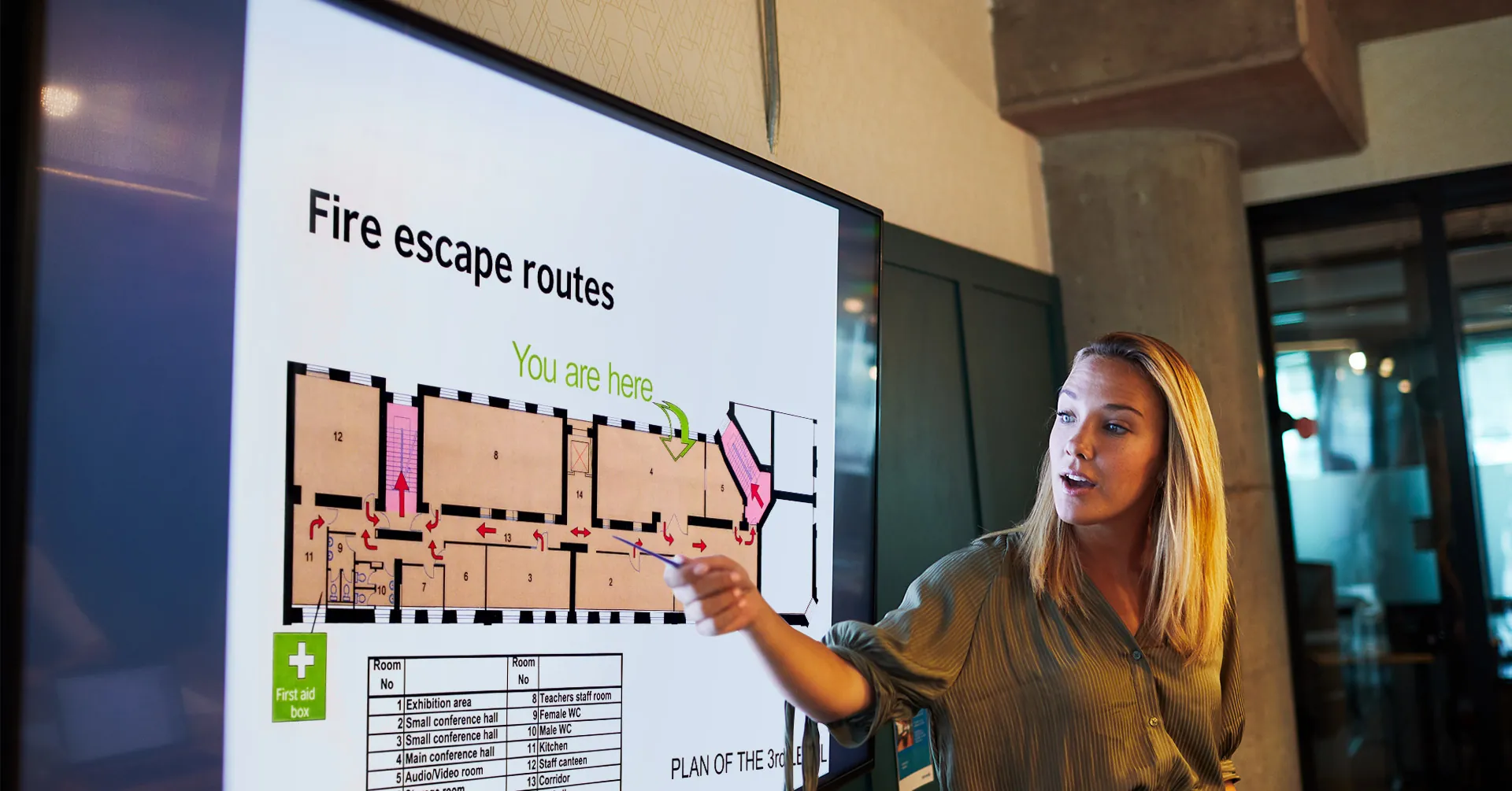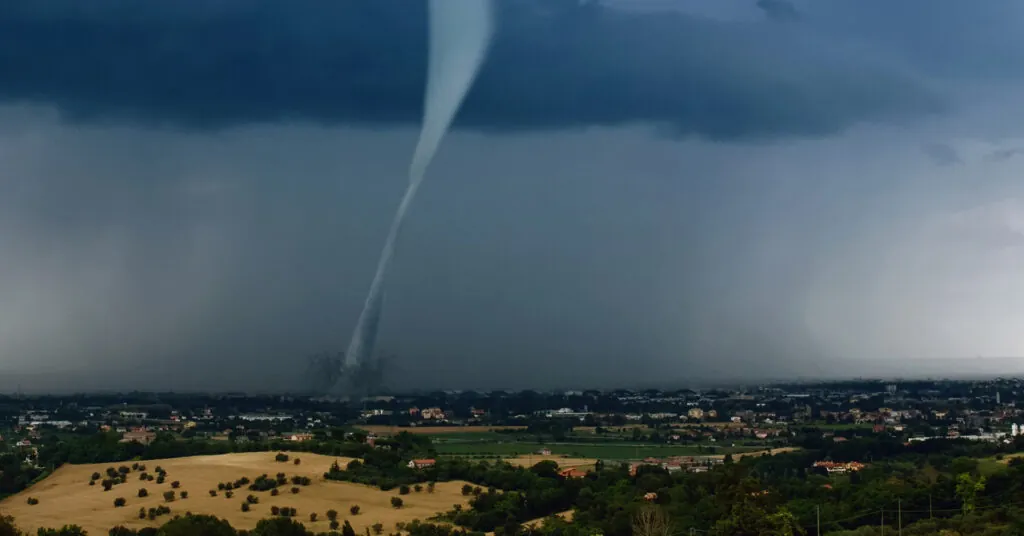
Tornado Drill Procedures for Workplace Preparedness
Tornadoes are some of the deadliest disasters a business and its people can face. Learn how to protect your operations and employees today.
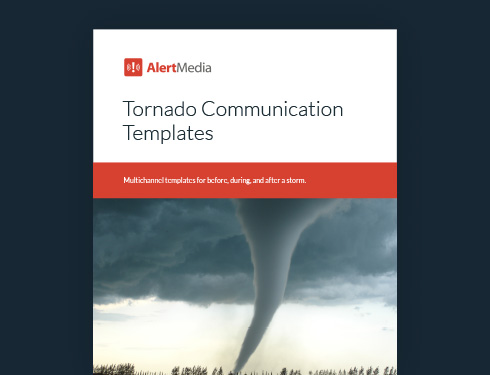
It’s a dark, windy, overcast day in your area. You park your car in your company’s parking lot and walk to the door. The winds around you blow so violently that your eyes tear up, so you squint hard and trudge toward the entrance. Through the constant whistle of fast-moving air, you hear what sounds like a freight train trundling by. But you’re certain there aren’t any tracks nearby. The noise isn’t coming from a train.
It’s the telltale sound of an approaching tornado. You’re in danger and must act quickly. And if your organization hasn’t invested time in preparing for these violent natural disasters, it’s unlikely anyone will know how to react in time.
Tornadoes bring indiscriminate, unpredictable destruction. They can cause millions of dollars of damage, claim lives, and disrupt entire regions. NOAA’s Storm Events Database provides searchable tables that list the impacts of individual tornadoes. In 2023, damage to property by tornadoes amounted to almost three-quarters of a billion dollars.
The severity and impact of tornadoes have seen an upward trend in recent years, and more areas that aren’t traditionally considered tornado-prone are seeing these severe weather conditions. Tornadoes are notoriously difficult to predict ahead of time, but you don’t need to wait for a watch or a warning to get prepared.
Regardless of the frequency of tornadoes, just a single twister can put your business and people at serious risk. “Everything can be significantly changed or destroyed in just a few seconds by a tornado,” explains Jennifer Dunn, Warning Coordination Meteorologist from the National Weather Service on a recent episode of The Employee Safety Podcast. That’s why you must prepare your employees for action as soon as a tornado alert goes out. “You’re going to want your employees to act quickly and get to shelter.”
Training and preparation are critical when it comes to navigating these unpredictable events. While you may not be able to predict tornadoes more than a day ahead, you can still be ready to mitigate the damage. Tornado emergency management is multifaceted, but one of the most important measures your company can take is to conduct tornado drills.
Tornado Communication Templates
Tornado Preparedness
Tornado preparedness and mitigation synthesize a wide range of disciplines and strategies with a few main objectives:
- Make your workplace more resistant to damage
- Ensure your people are aware of safe spaces
- Speed up your recovery efforts so your company can return to business as usual after a storm
A deep dive into the various aspects of tornado plans is beyond the scope of this post, but here’s a quick overview of what it takes to prepare your business for tornadoes:
Structure hardening
You’ve doubtlessly seen the aftermath of a tornado touchdown in a residential or business area. The sheer power of the winds rends roofs from their foundations, throws beams and shattered glass and other debris through the air so fast that they can impale people or other structures, and decimates weak structures like mobile homes and basic warehouses.
Upgrading your building with tornado-proof materials and reinforcement can be expensive, but it won’t be nearly as expensive as paying to rebuild your workplace from scratch. Consider having your organization’s roof braced and strapped, making it less likely to tear off in high winds. You can also replace your windows with a shatter-resistant variety to reduce the damage of glass shrapnel which can easily kill an unprotected person. Of course, the relative costs to retrofit an existing building will likely be more than if you were to incorporate tornado-resistant features into a new construction.
Shelter
While the above steps can increase tornado safety and reduce harm, the best thing you can do to protect your people is build an underground tornado-safe place. Check out this detailed guide from FEMA on rules and recommendations for tornado and hurricane shelters and shelter locations to help you build your own reliable storm shelter.
This may not be possible for some businesses due to cost or space restrictions. In a typical office building, the safest place is often an interior room with no windows on the lowest floor (underground if available), such as a bathroom or storm cellar.
If you work in a temporary structure without a sturdy building nearby, such as a trailer on a construction site, staying there can prove more dangerous than being out in the open. In the case of temporary structures, leave that area immediately and seek permanent shelter. This safe shelter area should be identified long before a tornado approaches.
Does OSHA require tornado drills?
No. While OSHA does share many recommendations for preparing for tornadoes, they do not have any standards related to mandatory tornado drill training. However, OSHA standards are only the bare minimum for an employer to satisfy legal requirements. We at AlertMedia believe that even if not required by law, tornado drilling can save lives and maintain business continuity if you find your business in a twister’s path.
Equipment and provisions
An approaching tornado requires those in danger to seek shelter and hunker down until it passes—unlike some other emergency responses, such as wildfire evacuations. Stock your designated safe space with the following emergency supplies to weather the tornado’s life cycle and to listen for the all-clear signal.
- Non-perishable, ready-to-eat food
- Water
- Flashlights and batteries
- Battery/hand-operated radio
- Blankets
- Tents and tarps
- Work gloves
- Helmets
- First aid kit
- Whistle
- Sanitation supplies (hand sanitizer, toilet paper, trash bags, diapers if applicable)
How to Conduct a Tornado Drill at Work
It’s no secret that we’re big fans of emergency drills here at AlertMedia. From fire drills to shelter-in-place drills, they provide safe, controlled opportunities to test emergency preparedness plans and give employees time to familiarize themselves with your organization’s emergency plan. They’re proven effective for various types of emergencies. Here are the five parts of tornado drill procedures for the workplace and tips to make them effective.
1. Activation
Tornadoes are very unpredictable. When and where they form, the paths they take, and their force and duration are entirely unknown until after the fact. Yet the conditions that generate tornadoes are known to meteorologists, and tornado watches and warnings are almost always issued by local authorities to give residents and businesses a chance to prepare or evacuate. Assign someone at your company to keep their ear to the ground—or radio, or TV set, as it were—and regularly scan for emergent tornado warnings and watches from local authorities.
Local outdoor warning sirens, news stations, and national resources like NOAA Weather Radio or the National Weather Service’s SKYWARN are very reliable for tracking incoming severe weather.
For more personalized alerts, location-based weather alerts are an excellent way to track the kinds of events you care most about.
As part of the tornado drill, this person tasked with monitoring tornado warnings will send out an emergency alert about the hypothetical tornado just as they would during the real thing. To avoid undue panic, make sure everyone is aware that this is a drill.
How often to run tornado drills
Like any other kind of emergency drill, tornado drills should be held regularly so your employees stay familiar with the process of seeking shelter. It can be helpful to schedule them close to the beginning of tornado season in the spring to remind everyone before the first major thunderstorms hit.
2. Taking shelter
As mentioned above, the only way to remain completely safe during a tornado is to enter a purpose-built hurricane/tornado shelter that can physically block the whirlwind of destruction that such events bring. Unfortunately, even many tornado-stricken areas don’t have adequate storm shelters, either public or private.
Even if a business lacks the resources and foresight to install a hardened concrete bunker, you can think carefully to identify the safest-possible shelter during a tornado.
Tornado-safe spaces should be:
- Small interior rooms
- Away from outside walls
- Windowless
- Built from hard materials such as concrete or brick
- On the lowest floor and not touching the roof
When taking shelter, employees should stay in a space away from the room’s corners at the lowest level as those areas tend to attract more flying debris.
3. Communication
You probably rely on tools like email and internal messaging services to keep in touch with your people daily. But what happens when a tornado knocks out power lines and internet access?
Situations like these are where multichannel emergency mass notification systems shine brightest. With these tools, you can reach out to your employees via voice calls, text messages, email, social media, and more. This means even if one or more channels of communication are inoperable, it’s likely that at least one other is still online, increasing your chances of keeping people informed during an emergency.
If you get a National Weather Service (NWS) warning that a tornado is in your area, you shouldn’t have to think about the necessary messaging when you likely have other things to do—like getting yourself to safety. You can create communication templates in advance that cover a tornado alert, safe hiding spots and shelters, and an all-clear message to start the recovery process. Be sure to use these templated messages during your drill to increase realism and prepare your employees for what to expect from emergency communication.
Sample tornado drill template:
A tornado drill will be conducted for all personnel in the [LOCATION] office on [DATE] at approximately [TIME].
DO NOT PANIC. This is only a drill.
Upon hearing the alarm, please seek immediate shelter in your designated location or an interior room. We will send out an “all clear” notification when the drill has concluded.
The entire drill process should last approximately [NUMBER] minutes. Thank you for your cooperation and participation in this important safety matter.
Contact [CONTACT NAME AND PHONE] with any questions or concerns.
Text/Push Notification
A tornado drill will be held in the [LOCATION] office on [DATE] at [TIME]. When the alarm sounds, seek shelter immediately.
Sample tornado warning template:
A tornado warning has been ordered for [NAME OF CITY] as of [TIME AND DATE]. Please seek shelter immediately!
You can find more information about shelter-in-place protocols, storm tracking, and the status of the storm by visiting our resource page for the latest updates. If you need assistance, you can call [CONTACT NAME AND PHONE].
Text/Push Notification
A tornado warning has been ordered for [NAME OF CITY] as of [TIME AND DATE]. Please seek shelter immediately!
4. Recovery
When running a tornado drill, there won’t be any debris to clean up, any live wiring to stay clear of, or collapsed structures to sift through. Instead, this “recovery” part of the drill should be a separate proceeding known as a tabletop exercise. In this mini exercise, the leader will present an imaginary recovery scenario to a group of participants. Perhaps a portion of your workplace was destroyed or there are employees that remain unaccounted for.
The participants will then talk out potential responses, ask questions, and work together to alleviate the “impact” of this imagined tornado.
While this exercise won’t simulate the recovery process, it will prime your employees to think critically about the recovery process and prepare them to assess real damage.
Find out more about disaster recovery tabletop exercises here.
5. Review and iteration
The drill’s over, the hypothetical tornado has dissipated into the atmosphere, and everyone’s back to doing their usual work. Now it’s time to look back on the drill and review how it went.
This part of the exercise is known as the after-action review, AKA a “hot wash.” In the process, you’ll develop an after-action report that recounts the successes, shortcomings, and potential improvements for next time. This review should be a collaborative effort among safety leaders, facility managers, and employees from all parts of the business. Allow everyone to note what they thought worked, what they thought could have gone better, and what they would do differently if a tornado were to actually approach the workplace. You might also consider inviting public safety officials from the local emergency management agency so that they can share their expertise.
Use this report to adjust your tornado emergency response plans as well as your emergency drills.
Learn a step-by-step framework for developing an after action report to ensure your organization is prepared for any emergency scenario.
Forecast: 100% Chance of Preparedness
By creating a tornado preparedness plan and committing time and resources to practice, you show your employees you truly care about their safety—and that they play an important role in the process. This and other disaster preparedness will improve overall workplace safety. Severe weather preparedness should always be a top priority and top of mind.

